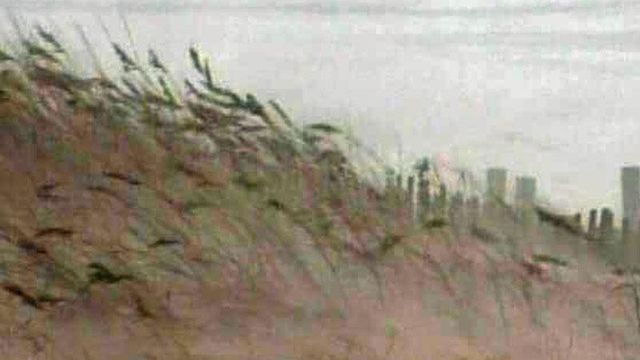Documentaries
Focal Point: Line in the Sand
WRAL looks at how erosion and increased storm activity could permanently bury part of the Outer Banks under water and why N.C. is spending millions trying to protect Highway 12, only to have it continually washed away by the sea.
Posted — UpdatedOriginal Air Date: Sept. 28, 2005
The Outer Banks are home to one of North Carolina's most visible and most famous landmarks, the Cape Hatteras Lighthouse. They are also home to a major national park and wildlife refuge. Their natural beauty and beaches attract millions of tourists who contribute hundreds of millions of dollars a year to the state’s economy.
However, scientists say erosion, combined with a rising sea level and increased storm activity, could cause major sections of the Outer Banks to go under water within our lifetime, and they say the Bonner Bridge that connects the northern and southern Outer Banks may not last much longer. They also say many of the expensive efforts to protect the Outer Banks are only making the problem worse.
While most people agree that the Outer Banks are fragile and in danger, few people agree on a strategy to protect and preserve them. While various interest groups have drawn their own lines in the sand, the sands of the Outer Banks continue to shift and drift, reminding everyone that Mother Nature is the one in charge.
North Carolina Highway 12, which provides access to the Outer Banks and connects its communities, is another line in the sand. The state has spent tens of millions of dollars rebuilding, relocating and trying to protect the highway, only to have sections of it continually washed away by the sea. Critics say it is an exercise in futility and a waste of state and federal tax dollars. To some, Highway 12 is a symbol of the problem not only on the Outer Banks, but on most of the state’s barrier islands. They say it represents a series of short-term fixes to protect immediate economic interests that do nothing to ensure the long-term viability of the Outer Banks’ critical connector.
Hosted by WRAL's Bill Leslie, Focal Point: “Line In The Sand” looks at the future of the Outer Banks and examines the dire predictions by scientists and the political battle that continues to delay the search for a long-term solution to protect one of our state’s most valuable natural, recreational and economic resources.
Watch the Documentary
WRAL.com Exclusive: Stan Riggs, a geologist at East Carolina University, says the earth is in a period of global warming that is causing glacial ice to melt and the sea level to rise about 1.5 feet every 50 years along the North Carolina coast.
Online Resources
- Outer Banks Task Force
- The Beach Road (an article about Highway 12, from "The Coastal Guide")
- Herbert C. Bonner Bridge Replacement Project (from the U.S. Fish & Wildlife Service Web site)
- Publications Concerning North Carolina (articles on Outer Banks erosion, from the U.S. Fish & Wildlife Service Web site)
- Geological Research Activities (from the U.S. Geological Survey Web site)
Web links are provided for informational purposes only. Views and opinions expressed on the Web sites of these organizations do not necessarily reflect the views and opinions of WRAL-TV and its parent company, Capitol Broadcasting Co.
Copyright 2024 by Capitol Broadcasting Company. All rights reserved. This material may not be published, broadcast, rewritten or redistributed.





